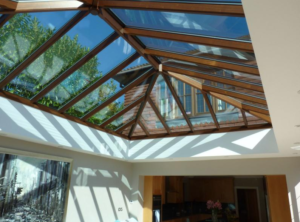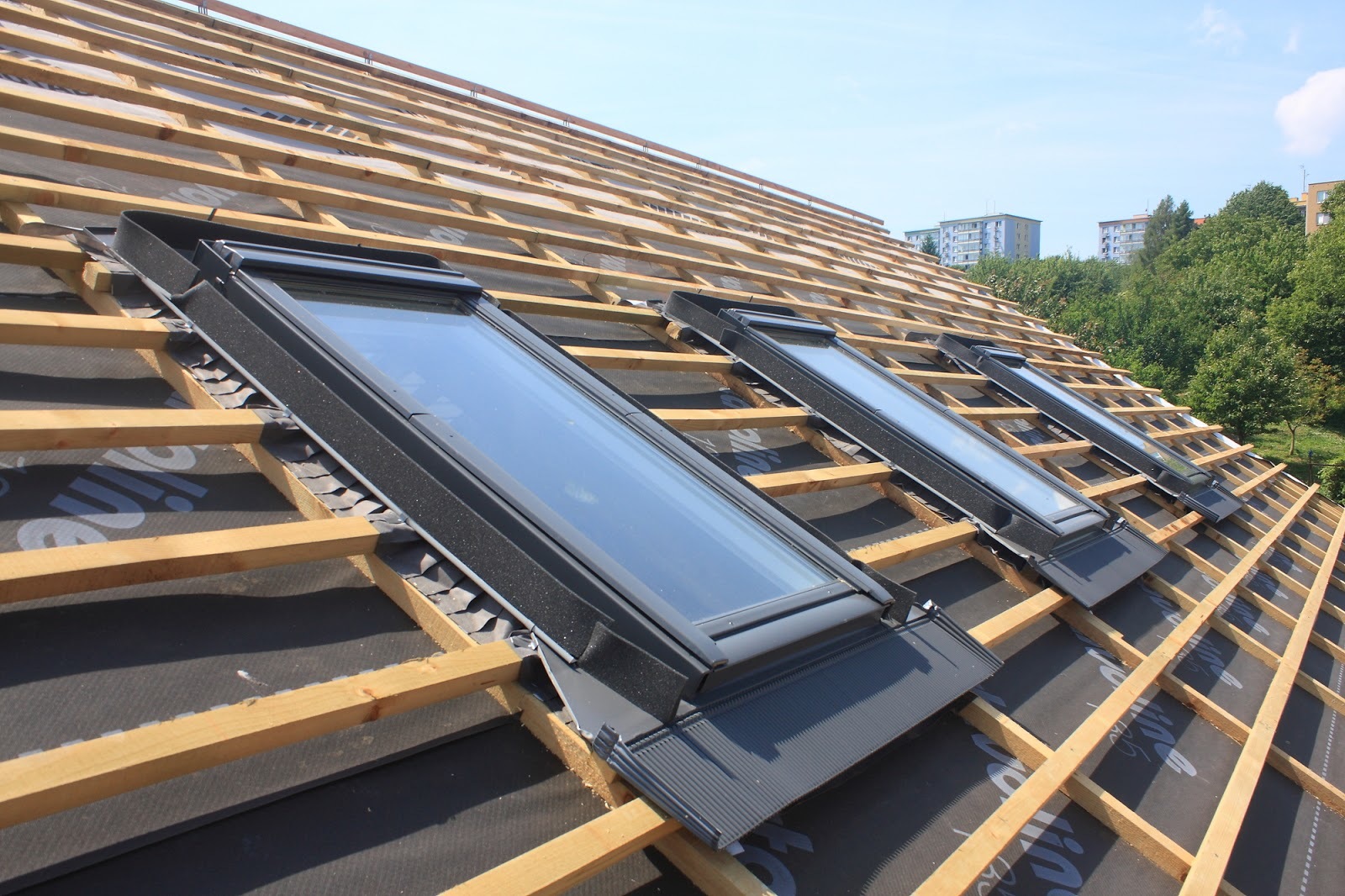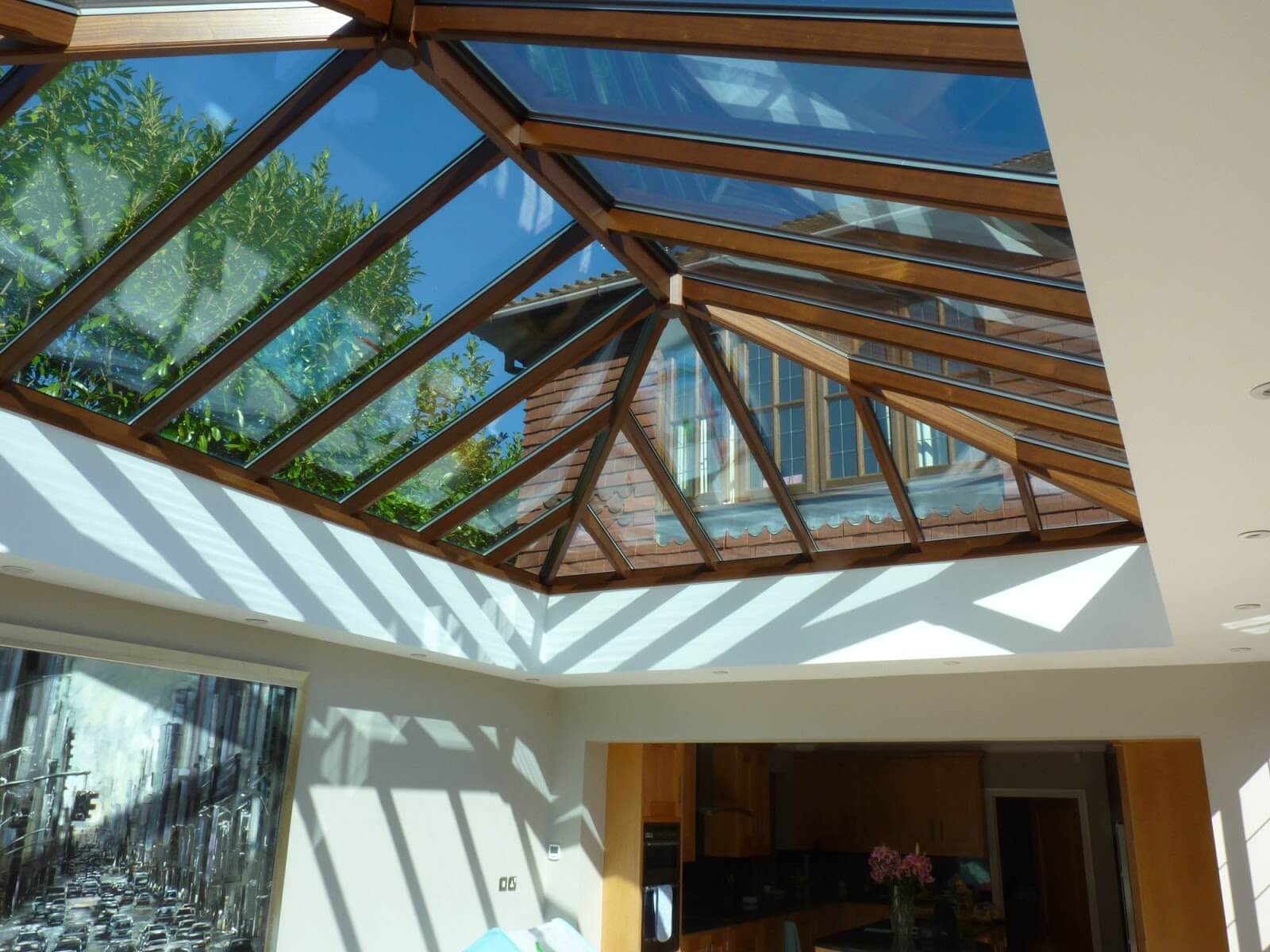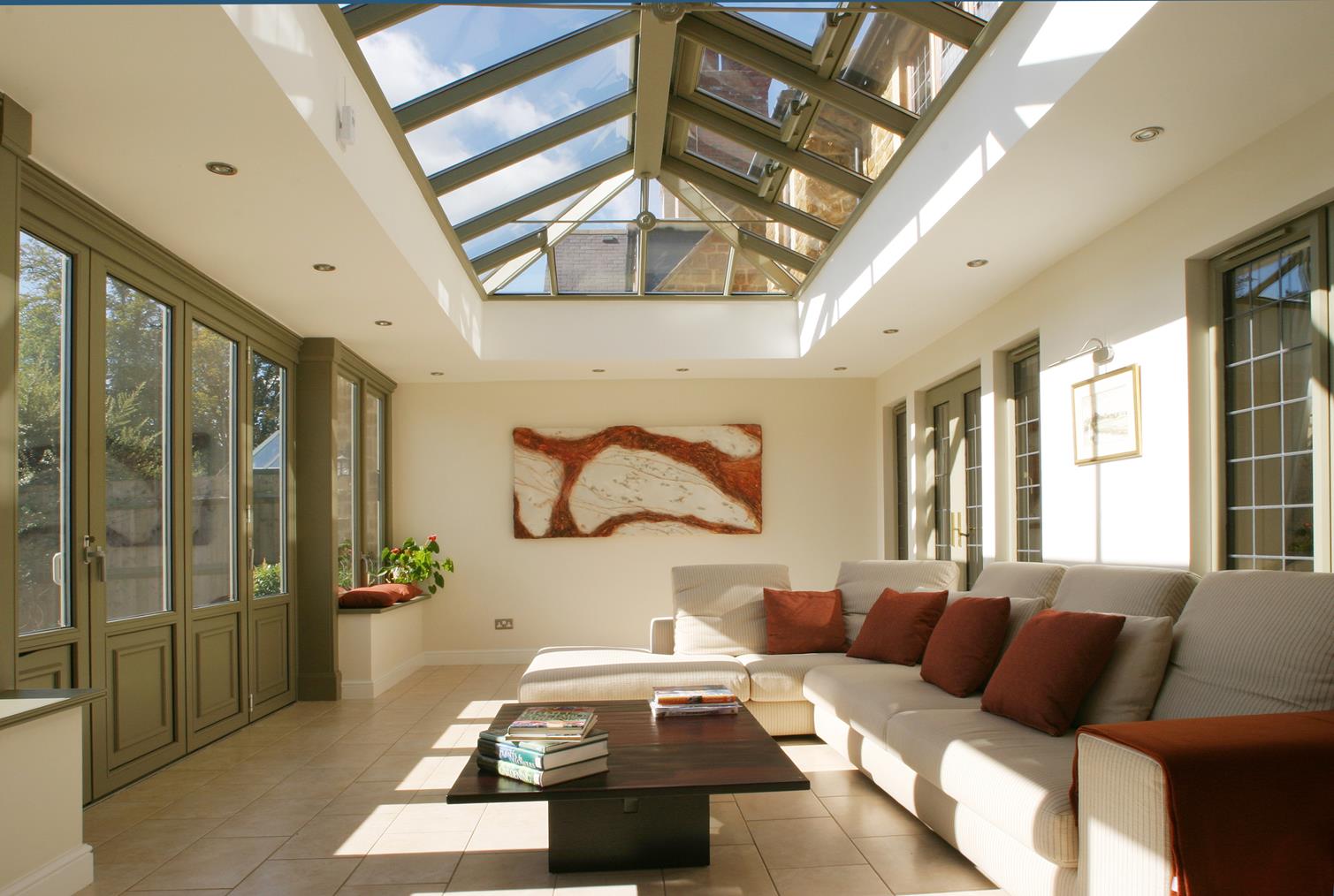Looking to add a touch of rustic charm or contemporary elegance to your home? A wooden roof lantern just might be the perfect architectural focal point. Let’s explore the warmth and character that wood lends […]
7 Expert Tips for Silencing Roof Windows from Rain
What are the best methods for reducing rain noise on roof windows?
A genuine concern when planning an extension is rain (or other) noise through any roof windows. Rain noise can spoil the pleasure of a roof conversion or an extra window added into a roof space.
Rain falling heavily onto glass is noisy, and there is nothing that can be done to change that.

However, there are steps that can be taken to minimize the disruption to domestic bliss.
Here are 7 ways to reduce rain noise on roof windows:
Steps you can take before the roof lantern is installed:
Consider the location of the roof windows on the property.
If the windows aren’t fitted yet, it is worth considering the placement of any roof glazing during planning. If the property is exposed to extreme conditions, placing windows in the shadow of prevailing weather will reduce the effect of the worst driving rain. Any buildings, or even trees uphill from your home could offer some shelter too.
2) Opt for noise-reducing glazing styles for your lantern.
Here at Prestige Lanterns, all of our products can accommodate glazing styles which will help reduce noise reduction. These noise-reducing options include:
Sealed unit spacing– The larger the gap between panes of glass, the greater the sound insulating quality. Sealed unit spacing is a great option to reduce rain noise.
Triple glazing. A triple glazed unit will muffle more rain noise than a double.
Thick panes – again, the thicker the glass the quieter the room below.
Gas filled cavities – gas within a sealed unit not only contributes to heat insulation but also helps reduce the noise travelling through the window.
Foam spacers – sealed units whose spacers are foam based rather than metal, offer greater soundproofing.
Is your roof lantern already installed?
If your roof windows are already in situation and the rain noise is becoming a distraction to living or keeping the family wake, there are actions will may help reduce the impact.
3) Check the fitting of the lantern for any noise leakage pathways.
Have an acoustic specialist comprehensively inspect the roof lantern assembly and all glass seals. Identify the precise location of even hairline gaps vulnerable as sound transmission pathways, particularly at the window perimeter fittings. Discuss available gap filling or secondary sealing options cut precisely to shape needed for an airtight noise barrier while allowing ventilation.
4) Install dual layered outside awning shade blinds.
Strategically layer awning blinds with the first reflective layer angled outwards from base of roof lantern deflecting initial soundwaves, as well as sunlight, before they strike the glass. The second dense blackout layer mounted close to exterior glass protects from residual bounced sound entering window assembly. This optimizes the dampening of direct rainfall din as well as ambient transport or commercial noise prevalent in the area.
5) Consider quad-glazed insulated automation-ready shutters.
If equipped with space and wiring for motorized units, explore quad-glazed shutters boasting insulation equivalencies surpassing your lantern’s designated STC/OITC thresholds. Employ automated scheduling to deploy these at peak neighbor noise events where darkness is not a concern. This failsafe option guarantees full noise elimination in worst case overexposures but sustains natural light during calmer daytime hours through normal roof lantern function.
6) Model potential honeycomb blind positioning staggering.
Factor in room layout views and lighting needs when mapping possible staggered depths and sides for honeycomb blind positioning such that no one exposure is entirely blocked if blinds must be drawn for noise control. Density selections can also vary by wall to modulate room acoustics for entertainment without detrimentally restricting exterior views or light elsewhere.
7) Audit range of insulating blind options balancing visibility needs.
Evaluate assorted sound dampening shades and determine optimal transmittance levels and automated settings given seasonal sunlight and noise variations. Block extreme noise events via scheduled commands while sustaining helpful daylight exposure during lower decibel periods. Integrate with smart hub for intuitive yet tailored control of the desired balance.
Additional Steps You Can Take Before the Roof Lantern Is Installed
Before undertaking noise reduction efforts, partner with an acoustics specialist to perform an in-depth sound study mapping decibel levels both inside and outside across all areas exposed to noise ingress. Identify any structural vulnerabilities in framing or seals that may allow sound pathways. Cross-reference predominant external noise source directions in relation to window placement. All this enables tailored recommendations based on your roof lantern’s unique scenario.
-
Consult with an architect or engineer: Seek professional advice to assess the noise levels in your area and determine the most effective noise reduction strategies for your specific roof design and location.
-
Consider external noise barriers: If your property is exposed to extreme weather conditions, consider installing external noise barriers, such as acoustic fencing or tree planting, to reduce the overall noise levels before they reach your roof windows.
-
Incorporate soundproofing materials: During the construction or renovation process, incorporate soundproofing materials, such as acoustic insulation or mass-loaded vinyl, into the roof structure and around the window openings to further dampen noise transmission.
Exploring Multi-Tiered External Barriers
For properties close to highways, railways or air traffic, explore implementing graduated noise barriers: trees or shrubs to absorb middle frequencies; taller acoustic fencing, berms or trellises to deflect additional sound waves. Analyze site lines to determine optimal barrier materials, densities, placements and heights for incrementally reducing transmission upstream.
Additional Measures for Existing Roof Lanterns
-
Address air gaps and leaks: Inspect the roof lantern installation for any air gaps or leaks around the window frames or seals. These gaps can amplify noise transmission and should be properly sealed or filled with soundproofing materials.
-
Utilize acoustic curtains or drapes: Hang heavy acoustic curtains or drapes behind the roof windows to absorb and block sound waves. Choose fabrics specifically designed for soundproofing to maximize effectiveness.
-
Install acoustic window film: Apply acoustic window film to the glass panes of the roof windows. This transparent film can significantly enhance soundproofing without compromising natural light transmission.
-
Consider sound masking systems: If rain noise remains a significant issue, consider installing sound masking systems that emit a subtle, ambient sound to help blend in with the rain noise and reduce its perceived loudness.
Additional Resources and Considerations
-
Noise reduction ratings: When selecting glazing options or soundproofing materials, pay attention to the noise reduction ratings (NR) or sound transmission class (STC) values. Higher ratings indicate better soundproofing performance.
-
Professional installation: For optimal noise reduction and long-term performance, consider hiring experienced professionals to install noise-reducing glazing, blinds, shutters, or other soundproofing measures.
-
Maintenance and upkeep: Regularly inspect and maintain your roof lantern, blinds, shutters, or other noise reduction measures to ensure they remain effective in reducing noise transmission.
Prestige Roof Lanterns UK are experts in supplying and fitting roof lanterns and skylights. Please contact us if you have any questions on reducing rain noise from your roof windows.






